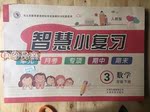题目内容
When he ______ the front door, he found his keys were nowhere.
A. would open B. opened C. had opened D. was to open
D
解析:
略

 智慧小复习系列答案
智慧小复习系列答案In the modern world more and more people meet the problem of identity.The most interesting example is that of a so – called “banana”, which refers to an American who has an Asian face but holds Western values.
In Shanghai, there now live a group of people from abroad.They look no different from the locals and speak fluent Chinese or even Shanghai dialect, but when it comes to writing Chinese characters, they are almost illiterate(文盲).Jack is such an example.He never learned to read or write Chinese characters, which he finds mysterious and difficult.From time to time, he files to the US as he does not feel Shanghai is where he comes from.“But when I am in the States, I feel that’s not my home either,” he said.
At De Gaulle Airport in France, there is a Swiss man who has been living in the waiting – room for a long time because he lost h is passport during his travels.He was refused entry into several countries.But when he was eventually allowed to return to Swizerland, he refused to leave the airport.His reason was very simple—“I am sure who I am.I need no acknowledgement from others,” he said during an interview.For th is reason he was honored by the Western media as “the Hero of identity.”
As the Internet becomes more and more popular, the problem of identity becomes more serious.In a virtual world, people can have different addresses registered with different names.In the Internet chat room, even one’s gender(性别) is hard to determine.It seems that in the glohal village, people are saying hello every day to each other without knowing whom they are talking to.
What will be the next crisis(危机) of identity? With the development of cloning technology, it might be: who is the real “I”?
【小题1】What does the passage mainly talk about?
| A.The importance of identity. |
| B.The crisis of identity. |
| C.Differences between Eastern and Western cultures. |
| D.Difficulty in living in foreign counties. |
A.he needed to board a plane at any time
B.he couldn’t afford to live in a hotel
C.he needed others acknowledgement
D.he couldn’t prove who he was
65.A “banana” in the passage is in fact an .
A.American traveling to Asia B.American keeping Eastern culture
C.American born in Asia D.America – born Asian
【小题3】We can infer from the passage that the author believes .
| A.there will be more problems relating to identity in the future |
| B.Internet technology helps solve problems of identity |
| C.only people traveling abroad have problems of identity |
| D.people don’t need to worry about identity |
“Racism (种族歧视) is a grown-up disease,” declares the saying on Ruby Bridge’s website along with a photo of Mrs. Bridge today, a 6-year-old girl four decades ago. In the photo, she is walking up the steps of the William Frantz Public School in New Orleans, a little black girl accompanied by two officers who protect her on her way to school.
Her name then was Ruby Nell. It was Nov. 14, 1960. She was the first black child to enroll at this all-white elementary school according to the court order to desegregate in New Orleans schools. Her story is moving -- she was a very courageous child -- and remains a significant proof against intolerance (不宽容) of all kinds. Ruby’s photo brings out another powerful image on her website: Norman Rockwells symbolic painting for Look magazine on Jan. 14, 1964, “The Problem We All Live With.”
Rockwell was an illustrator of exceptional skill and charm. He produced a vast number of unforgettable images over a long career, many of them involving children. His American kids are innocent and appealing, but often, at the same time, decidedly naughty. His method was to photograph his models, and the resulting paintings were photographic. But it is revealing to see how the artist slightly changed facial expressions from photo to oil painting in order to make his paintings communicate with the viewer. Communication, even persuasion, lay at the back of his work; this was art for effect.
“The Problem We All Live With” belongs to Rockwell’s later work, when he began openly showing his strong belief in liberty. This is a highly persuasive image. Before he arrived at the final copy, one sketch (草图) shows the little girl closer to the two officers following her than to those in front. In the finished picture, the girl seems more determined, independent, and untouched. The unfriendly tomatoes thrown on the wall are behind her now, and she, is completely unaffected.
1.Ruby Nell was protected by officers on her way to school, because .
|
A.she was a little fighter against racism |
|
B.she was very young, short and timid |
|
C.she was the first black to study in an all-white school |
|
D.she was chosen by the com t0be’wi’th white children |
2.According to the passage, “The Problem We All Live With” is a(n) .
|
A.social program for American children |
|
B.famous painting by Norman Rockwell |
|
C.photo displayed on Ruby Bridges’ website |
|
D.exhibition at the Norman Rockwell Museum |
3.The word “desegregate” in paragraph 2 probably means“ ”.
|
A.fight against the white |
B.end racial separation |
|
C.struggle for freedom |
D.stop the black-white conflict |
4.The main topic of this passage is .
|
A.how Rockwell encouraged Ruby to fight against racism |
|
B.how Ruby won her fight to go to an all-white school |
|
C.how Rockwell expressed his protest in .Iris work |
|
D.how persuasive Rockwell’s earlier work of art is |